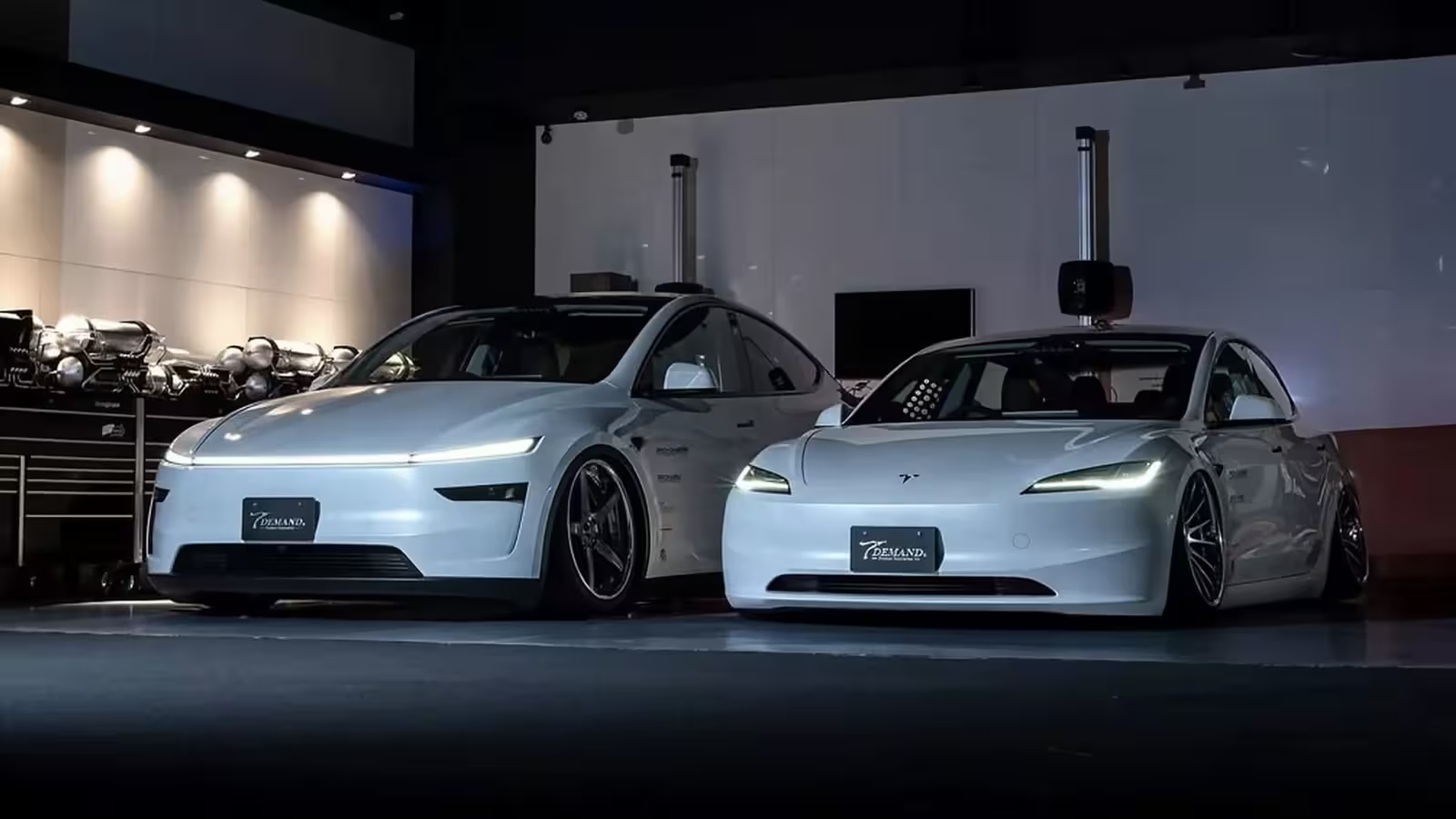5 Minutes
Tesla’s Earnings Reveal a Company at a Crossroads
This week, Tesla Inc. finds itself under intense scrutiny as it prepares to release its second-quarter earnings on July 23. Once revered as the poster child of the electric vehicle (EV) revolution, Tesla is confronting formidable challenges that threaten its leadership in the automotive and tech sectors. Analysts anticipate a 13% decline in revenue and a staggering 25% drop in earnings per share, signaling a difficult period for Elon Musk’s company. Yet, if recent trends are any indication, Tesla’s focus may be shifting away from traditional car manufacturing to cutting-edge technology, artificial intelligence (AI), and autonomous mobility.
Robotaxis and AI: A New Frontier for Tesla
Recent developments underscore Tesla’s evolving identity. The company has just introduced a pilot ride-hailing service in Austin, Texas—heralded by CEO Elon Musk as the first significant step toward deploying fully autonomous robotaxis by the end of 2025. Tech commentators and financial analysts alike have positioned this move as a breakthrough, steering the conversation away from mounting concerns about Tesla’s core auto business.
Tesla’s ambitious plans leverage its expertise in AI and machine learning. Its advanced driver-assistance systems are setting the groundwork for future robotaxi networks, offering consumers a glimpse of the potential for self-driving technology to revolutionize urban mobility. If successful, Tesla could redefine what is possible in the realm of smart transportation, cementing its status as much as an AI powerhouse as an automaker.
Product Features: What Sets Tesla’s Robotaxi Strategy Apart?
Tesla’s approach to autonomy centers on a "vision-only" system, relying on cameras and advanced neural nets rather than traditional LiDAR or radar sensors. This strategy aims to enable unsupervised full self-driving (FSD) capabilities across diverse road conditions. Tesla’s over-the-air updates, real-time fleet learning, and proprietary AI models position its products at the forefront of the push for safer, smarter transportation solutions.
Challenges Facing Tesla’s Core Business
Despite the tech-forward narrative, the numbers paint a sobering picture. Tesla’s global vehicle deliveries dropped by over 13% in Q2, a clear indication of waning demand. The impending expiration of the U.S. federal EV tax credit on September 30 and new legislative changes by the Trump administration threaten to further erode Tesla's financial advantages. Regulatory credits, once a lucrative income source, are diminishing, and with tariffs and lackluster delivery figures, several Wall Street firms—including Bank of America and Wedbush—have adjusted their forecasts downward.
Market Comparison: Tesla vs. Emerging Competitors
The electric vehicle market is growing increasingly crowded. Legacy automakers and emerging startups alike are unveiling advanced EVs at competitive price points, intensifying the competition. Charging infrastructure, high price tags, and concerns about battery longevity remain significant hurdles across the industry—but Tesla’s early-mover advantage is no longer guaranteed. The company’s recent performance lags behind the growth seen from rivals who are quickly catching up in both hardware and intelligent mobility services.
The Cooling U.S. EV Market
Market dynamics are weighing heavily on Tesla. Consumers are hesitant due to rising costs and inadequate charging infrastructure. Political shifts have also alienated segments of the customer base that once championed the brand. As these obstacles mount, Tesla’s transition from selling hardware to marketing a software-driven vision becomes a necessity.
From Hardware to Hope: The New Tesla Narrative
Tesla’s valuation remains buoyed by investor faith—faith in transformative technologies like full self-driving, AI-powered mobility, and the rapid deployment of robotaxis. The company’s recent alignment with xAI, Musk’s AI research startup and a direct rival to OpenAI, has generated additional excitement. The potential synergy between Tesla’s vast data resources, infrastructure, and AI expertise with xAI’s ambitions has captured the attention of both institutional and retail investors.
Strategic Advantages and Use Cases
Tesla’s future hinges on its ability to scale autonomous driving technology. Use cases range from urban ride-hailing to logistics automation—sectors poised for disruption by scalable, intelligent robotics. If Tesla can deliver on its promises, it could unlock significant new revenue streams and reinvent the company as a global technology leader, impacting not only personal mobility but also commercial transportation.
Investor Caution: Hype vs. Fundamentals
While Musk continues to promote ambitious timelines for unsupervised FSD by end of 2025, industry experts urge caution. The fundamental financials are sobering: declining sales, increasing costs, and shrinking regulatory benefits dictate a need for swift execution. Unless demand rebounds or the robotaxi initiative swiftly scales, Tesla’s hefty market capitalization could come under pressure.
Listening Between the Lines
The upcoming earnings call is expected to focus heavily on autonomy, AI advancements, and the integration with xAI. Traditional automotive performance metrics may take a back seat, making it more important for analysts and investors to read between the lines. What is not said—about shrinking EV margins or missed delivery targets—may be just as telling as the bold visions of an AI-driven future.
The Road Ahead: Will AI Drive Tesla’s Next Success?
Tesla’s journey from disruptive automaker to AI-driven mobility company reflects broader trends in the technology sector. As government incentives wane and competition intensifies, Tesla’s best hope may lie in selling not just electric cars, but intelligent transportation services powered by software and AI. The race is on: can Tesla deliver revolutionary autonomy in time to counter faltering EV sales and justify its sky-high valuation, or will belief alone prove insufficient for sustained growth?
For tech enthusiasts and investors alike, the answer will become clearer as Tesla pivots to embrace a future beyond the car—one built on data, intelligence, and bold promises.



Comments